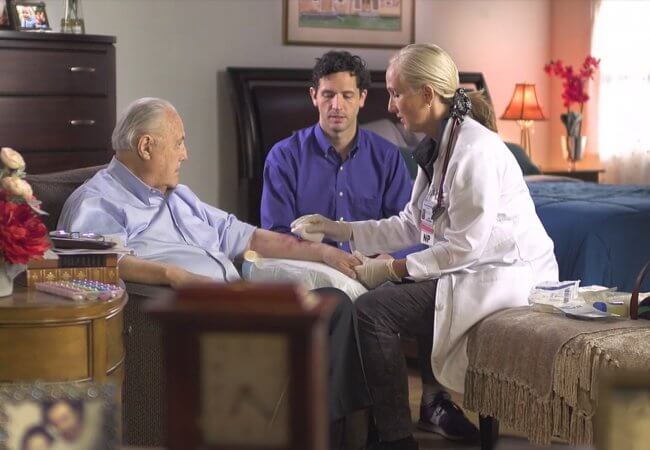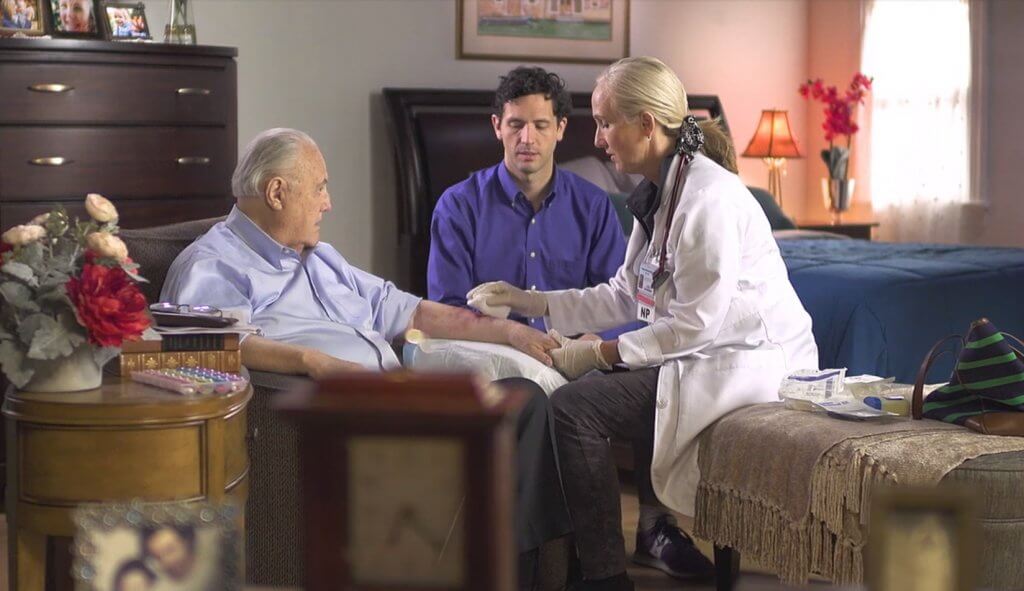
Nov 16, 2017
New Videos Guide Caregivers As They Help Family at Home
“It’s a little scary dealing with wounds like this,” confesses a wife whose husband is being discharged from the hospital. It’s on camera, and she’s talking to nurses as they carefully walk her through the steps she and her husband will need to follow to care for his wounds once they get home.
That is the point of a set of videos recently released from the Home Alone Alliance in collaboration with the UC Davis Betty Irene Moore School of Nursing, in time for National Family Caregivers Month: Nurses are experts at care, and typically lead the instruction that shows worried family members what to do once they take over caregiving duties at home.
Almost half of America’s more than 40 million family caregivers say they perform medical and nursing tasks for loved ones. That is how these three- to six-minute videos can help. In English and Spanish, they provide step-by-step instruction on all-too-common health concerns such as treating skin tears, preventing pressure ulcers, maintaining ostomy bags, and more. The videos also list health items such as bandages and gloves that the family caregiver will need at home.
Such knowledge is familiar to nurses, but mysterious and even frightening for those not in the know—until a nurse steps in, as the videos show.
The Home Alone Alliance (HAA), founded by AARP, the United Hospital Fund, the UC Davis Betty Irene Moore School of Nursing, and the Family Caregiver Alliance, has a membership of 15 organizations working to change the way health care professionals recognize and support family caregivers performing medical/nursing tasks. The videos are part of that effort, as are resources from the American Journal of Nursing, a Home Alone Alliance member that provides guidance directed at nurses supporting patients and their family caregivers.
The Home Alone Alliance has produced other helpful videos, too, such as a series addressing mobility concerns. Those short videos, also in English and Spanish, show nurses helping family caregivers with ways to stop falls and move a person from a bed to a wheelchair, or wheelchair to car. In addition to the videos, HAA founding partner, the United Hospital Fund develops resource guides to reinforce the lessons in the videos.
These Home Alone Alliance videos are resources that consumers need to see, so if you’re a nurse, pass them on. Even those people who do not consider themselves family caregivers may recognize in each video ways they can help neighbors and friends who perform these complex care tasks—and one day, perhaps someone they know.

